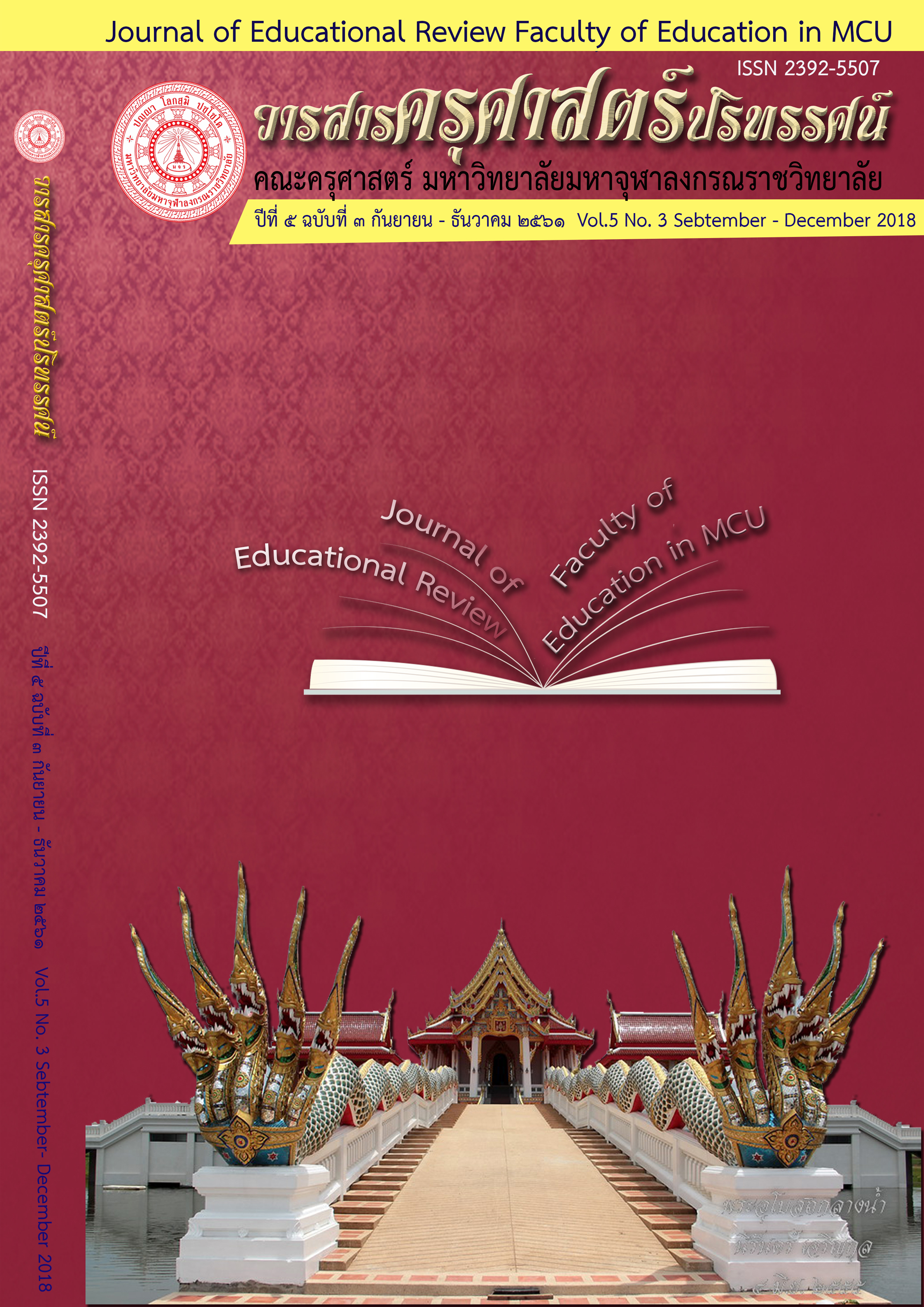The Buddhist Decision - Making Model for School Administrators under the Secondary Educational Service Area Office 1, Bangkok
Main Article Content
Abstract
The objectives of this research were; 1) to study the current situations and
problems of decision making of school administrators under the Secondary
Educational Service Area Office 1, Bangkok, 2) to develop a Buddhist decision model
for school administrators, and 3) to propose a model of Buddhist decision making for
school administrators. The mixed research methodology was used in the study. The
quantitative data were collected from 261 subjects by questionnaires and analyzed
by frequency, percentage, mean, and standard deviation. The qualitative data were
obtained from in-depth interviews with 9 key-informants and group discussions with 9
experts, and then analyzed by content analysis.
The research results found that:
1. The current situations and problems on decision making of school
administrators under the Secondary Educational Service Area Office 1, Bangkok, in
personnel administration, academic administration, general administration, and
budget administration were at the high level overall. The current problems
concerning decision making consisted of unskillful teachers, personnel recruitment,
budget shortage for training and seminar, continuing personnel development, work
monitor and supervision, teaching and activities in schools, personnel training, and
lack of best practice training in human resource management. In general administration, work improvement should be done in security, maintenance, building
using, public relations and support education in accordance with policy.
2. In the development of a Buddhist decision making model for school
administrators under the Secondary Educational Service Area Office 1, Bangkok, the
principles of the Four Noble Truths and Critical Reflection should be integrated in
academic, budget, personnel and general administration relating to 7 steps of
decision making theory of Plunkett and Attner; problem identification, factors
limitation identification, alternative development, alternative analysis, optimal
solution identification, implementation, and creating a control and evaluation
system.
3. The Buddhist decision making model in application with Plunkett and
Attner’s 7-step model relevant to the Four Noble Truths integrated with Critical
Reflection results to the "DDM Model" for school administrators in the most effective
making decision in academic administration, budget administration, personnel
administration and general administration.
Article Details
ทัศนะและความคิดเห็นที่ปรากฏในบทความในวารสารฉบับนี้ถือเป็นความรับผิดชอบของผู้เขียนบทความนั้นเพียงผู้เดียว และไม่ถือเป็นทัศนะและความรับผิดชอบของกองบรรณาธิการ
กองบรรณาธิการขอสงวนสิทธิ์ในการคัดเลือกบทความลงตีพิมพ์และจะแจ้งให้เจ้าของบทความทราบหลังจากผู้ประเมินบทความตรวจอ่านบทความแล้ว
ต้นฉบับที่ได้รับการตีพิมพ์ในวารสารครุศาสตร์ปริทรรศน์ คณะครุศาสตร์ มหาวิทยาลัยมหาจุฬาลงกรณราชวิทยาลัย ถือเป็นกรรมสิทธิ์ของคณะครุศาสตร์ มหาวิทยาลัยมหาจุฬาลงกรณราชวิทยาลัย ห้ามนำข้อความทั้งหมดหรือบางส่วนไปพิมพ์ซ้ำ เว้นเสียแต่ว่าจะได้รับอนุญาตจากมหาวิทยาลัยฯ เป็นลายลักษณ์อักษร
References
๒๕๕๒ – ๒๕๖๑). กรุงเทพมหานคร : พริกหวานกราฟฟิค.
พระสมุห์สัมฤทธิ์ ติสฺสานุตฺตโร (ดิสสา). (๒๕๕๘). รูปแบบการจัดการเรียนการสอนด้วยโยนิโส
มนสิการตามหลักกัลยาณมิตรของครูต้นแบบในสังคมไทย. ดุษฎีนิพนธ์พุทธศาสตรดุษฎี
บัณฑิต (พุทธบริหารการศึกษา). บัณฑิตวิทยาลัย : มหาวิทยาลัยมหาจุฬาลงกรณ
มหาวิทยาลัย.
B. Mulford, L. Kendell, and D. Kendell.(2004). Administrative Practice and High School
Students Perception of Their School Students Perception of Their School,
Teachers and Perfomance, joumal of Educational Administration 42, 1
(February 2004) : 78 – 97.


